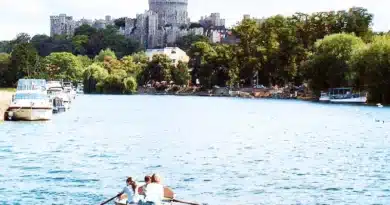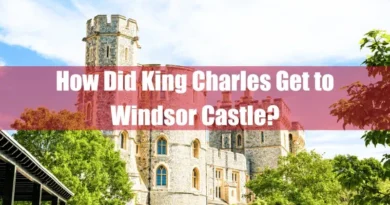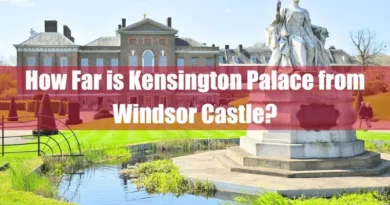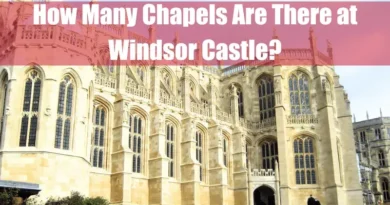Do the Royal Weddings take place at Windsor Castle?
Yes, numerous royal weddings have taken place at Windsor Castle, particularly in St. George’s Chapel, which has been a favoured venue for royal weddings since Queen Victoria’s reign.
Some notable weddings include HRH The Prince of Wales (later Edward VII) and Princess Alexandra of Denmark in 1863, Prince Edward and Sophie Rhys-Jones in 1999, and more recently, Prince Harry and Meghan Markle in 2018.
Royal family members often attend these events, which hold significant historical and cultural importance.
Key Takeaways
| Section | Key Takeaways |
|---|---|
| Introduction | Royal weddings at Windsor Castle are grand public events reflecting the continuity of the British monarchy. |
| Historical Context | Queen Victoria set the tradition of royal weddings in Windsor, influencing subsequent generations. |
| 19th Century | Notable weddings include Edward VII (1863) and Princess Louise (1871). |
| 20th Century | Significant weddings include Princess Alice (1904) and Prince Edward (1999), showcasing evolving traditions. |
| 21st Century | Recent weddings like Harry & Meghan (2018) and Beatrice & Edoardo (2020) reflect modern adaptations and global interest. |
| Venue Details | St George’s Chapel is renowned for its Gothic architecture and historical significance. |
| Wedding Ceremonies | Mix religious and civil ceremonies, blending traditional elements with modern adaptations. |
| Guest Lists and Attendees | Include royal family members, dignitaries, and celebrities, highlighting the social importance of the events. |
| Wedding Attire | Iconic dresses set fashion trends designed by renowned designers incorporating symbolic elements. |
| Floral Arrangements | Traditional choices like Myrtle and modern trends emphasise sustainability and personal taste. |
| Post-Ceremony Traditions | Carriage processions and lavish receptions are key traditions showcasing royal hospitality. |
| Media Coverage | Evolved from print and radio to global live broadcasts and social media, enhancing public engagement. |
| Impact and Legacy | Influences popular culture and fashion, with many weddings including charitable efforts. |
Let’s discuss in detail:
Introduction
Royal weddings have long held a place of immense significance, capturing the imagination and hearts of people worldwide. Windsor Castle, an enduring symbol of the British monarchy, has hosted numerous royal weddings, each event etched into history.
These weddings are not merely personal unions but also grand public spectacles, reflecting the continuity and tradition of the British royal family.
Historical Context
The Tradition of Royal Weddings at Windsor Castle
Windsor Castle’s association with royal weddings dates back centuries, with its majestic St George’s Chapel being the preferred venue for many royal ceremonies. This tradition was particularly solidified during Queen Victoria’s reign.
The chapel’s grandeur and historical and architectural significance provide a fitting backdrop for these momentous occasions.
Queen Victoria’s Influence on Royal Weddings
Queen Victoria’s preference for Windsor Castle as a wedding venue set a precedent for subsequent generations. Her children and grandchildren often chose the castle for their nuptials, embedding the tradition further into the royal fabric.
The Queen’s influence extended beyond the venue, affecting the style and formality of royal weddings for decades.

Notable Royal Weddings by Century
19th Century
1. Prince of Wales (Edward VII) and Princess Alexandra (1863)
On March 10, 1863, the future King Edward VII married Princess Alexandra of Denmark. The wedding was a grand affair, attended by dignitaries from across Europe and marking the beginning of a new era for the British monarchy.
2. Princess Helena and Prince Christian of Schleswig-Holstein (1866)
Princess Helena, Queen Victoria’s third daughter, married Prince Christian of Schleswig-Holstein on July 5, 1866. The ceremony occurred in the Private Chapel at Windsor Castle, reflecting the queen’s preference for family-centric celebrations.
3. Princess Louise and Marquess of Lorne (1871)
The marriage of Princess Louise, Queen Victoria’s fourth daughter, to the Marquess of Lorne on March 21, 1871, was notable for its modern touches. It was one of the first royal weddings to incorporate elements that would become standard in future ceremonies.
4. Prince Arthur and Princess Louise Margaret of Prussia (1879)
Prince Arthur, Duke of Connaught, wed Princess Louise Margaret of Prussia on March 13, 1879. Their union symbolised the strengthening of ties between Britain and Germany, a common theme in royal marriages of the era.
5. Princess Frederica of Hanover and Luitbert von Pawel Rammingen (1880)
Princess Frederica of Hanover’s wedding to Luitbert von Pawel Rammingen on April 24, 1880, highlighted Windsor’s role in uniting European royal families. The event was a private yet significant occasion, reinforcing dynastic connections.
6. Prince Leopold and Princess Helen of Waldeck and Pyrmont (1882)
Prince Leopold, Duke of Albany, married Princess Helen of Waldeck and Pyrmont in a poignant affair on April 27, 1882. Prince Leopold, who had haemophilia, found in Helen a devoted partner, underscoring the personal and political dimensions of royal unions.
7. Princess Marie Louise of Schleswig-Holstein and Prince Aribert of Anhalt (1891)
Princess Marie Louise, granddaughter of Queen Victoria, married Prince Aribert of Anhalt on July 6, 1891. Their wedding at Windsor Castle was grand, embodying the opulence and splendour of late Victorian royal ceremonies.

20th Century
1. Princess Alice Mary of Albany and Prince Alexander of Teck (1904)
On February 10, 1904, Princess Alice Mary of Albany married Prince Alexander of Teck. The wedding was a significant social event, reflecting the close-knit nature of European royalty.
2. Princess Margaret of Connaught and Prince Gustaf Adolph of Sweden (1905)
Princess Margaret, daughter of the Duke of Connaught, married Prince Gustaf Adolph of Sweden on June 15, 1905. Their union linked the British and Swedish royal families, emphasising the role of marriage in diplomatic relations.
3. Lady Helena Cambridge and Major John Gibbs (1919)
Lady Helena Cambridge, niece of Queen Mary, married Major John Gibbs on September 2, 1919. The wedding took place shortly after World War I, symbolising a return to normalcy and the enduring nature of royal traditions.
4. Anne Abel Smith and David Liddell-Grainger (1957)
Anne Abel Smith, granddaughter of Princess Alice, married David Liddell-Grainger on December 14, 1957. Their wedding at St George’s Chapel was more intimate, reflecting the changing nature of royal ceremonies in the mid-20th century.
5. Lady Helen Windsor and Timothy Taylor (1992)
Lady Helen Windsor, daughter of the Duke of Kent, married Timothy Taylor on July 18, 1992. The ceremony at St George’s Chapel was marked by its blend of tradition and modernity, setting a precedent for future royal weddings.
6. Prince Edward and Sophie Rhys-Jones (1999)
On June 19, 1999, Prince Edward, the Queen’s youngest son, married Sophie Rhys-Jones. The wedding was a grand celebration, with thousands of well-wishers lining the streets of Windsor.
21st Century
1. Service of Prayer and Dedication for Prince Charles and Camilla Parker Bowles (2005)
Although their civil marriage occurred at Windsor Guildhall, Prince Charles and Camilla Parker Bowles had a Service of Prayer and Dedication at St George’s Chapel on April 9, 2005. The service was attended by senior members of the royal family and marked a significant moment in modern royal history.
2. Peter Phillips and Autumn Kelly (2008)
The Queen’s eldest grandson, Peter Phillips, married Autumn Kelly on May 17, 2008. The St George’s Chapel wedding was a joyful event many royal family members attended.
3. Prince Henry (Harry) and Meghan Markle (2018)
Prince Harry and Meghan Markle’s wedding on May 19, 2018, was a global spectacle. The ceremony at St George’s Chapel was watched by millions worldwide, symbolising the modern era of the British monarchy.
4. Princess Eugenie and Jack Brooksbank (2018)
Princess Eugenie married Jack Brooksbank on October 12, 2018. Their St George’s Chapel wedding was a star-studded affair attended by celebrities and royals.
5. Lady Gabriella Windsor and Thomas Kingston (2019)
Lady Gabriella Windsor, daughter of Prince and Princess Michael of Kent, married Thomas Kingston on May 18, 2019. The ceremony at St George’s Chapel was attended by the Queen and other senior royals.
6. Princess Beatrice and Edoardo Mapelli Mozzi (2020)
Princess Beatrice married Edoardo Mapelli Mozzi on July 17, 2020, in a private ceremony at the Royal Chapel of All Saints, Windsor. The intimate wedding was a departure from the larger royal weddings, reflecting the constraints of the COVID-19 pandemic.
Venue Details
St George’s Chapel: Architecture and Historical Significance
With its magnificent Gothic architecture, St George’s Chapel is a central feature of Windsor Castle. The chapel was founded in 1348 by King Edward III and has been expanded and renovated.
Its stunning stained glass windows, intricate woodwork, and historic tombs make it a fitting venue for royal weddings. The chapel’s Quire, Nave, and Horseshoe Cloister have witnessed many significant events, adding to its historical and cultural importance.
Other Locations within Windsor Castle for Wedding Ceremonies
While St George’s Chapel is the primary venue for royal weddings, other locations within Windsor Castle have also hosted ceremonies. The Private Chapel, Royal Lodge, and the Royal Chapel of All Saints are notable alternatives.
These venues offer different atmospheres and settings, from the grandeur of the Private Chapel to the more intimate surroundings of the Royal Lodge.

Wedding Ceremonies
Religious and Civil Ceremonies
Royal weddings at Windsor Castle have included both religious and civil ceremonies. St George’s Chapel primarily hosts religious services as a place of worship. However, civil ceremonies, like the marriage of Prince Charles and Camilla Parker Bowles at Windsor Guildhall, highlight the flexibility and modernity of royal wedding traditions.
Traditional Elements and Modern Adaptations
Royal weddings at Windsor Castle often blend traditional elements with modern adaptations. Traditional aspects include the use of the chapel, the presence of the Archbishop of Canterbury, and the inclusion of hymns and prayers.
Modern touches, such as contemporary music choices and personalised vows, reflect the evolving nature of royal ceremonies.
Guest Lists and Attendees
Royal Family Members
Royal weddings at Windsor Castle are attended by members of the royal family, often spanning several generations. These events serve as family reunions, bringing together royals from across the globe.
The guest list typically includes the reigning monarch, immediate family members, and extended relatives.
Notable Guests and Celebrities
In addition to royal family members, notable guests and celebrities frequently attend these weddings. Politicians, foreign dignitaries, and well-known public figures add to the event’s prestige.
High-profile weddings like Prince Harry and Meghan Markle’s draw global attention and a star-studded guest list.

Wedding Attire
Iconic Wedding Dresses and Attire
Royal wedding dresses are often the ceremony’s highlight, drawing attention from fashion enthusiasts and the public alike. Notable examples include Queen Elizabeth II’s dress, designed by Norman Hartnell, which featured intricate embroidery and a 13-foot train.
Meghan Markle’s Givenchy gown, designed by Clare Waight Keller, was celebrated for its simplicity and elegance. Princess Eugenie’s dress, created by Peter Pilotto and Christopher De Vos, was unique in its inclusion of meaningful symbols and a design highlighting her scar from scoliosis surgery.
Designers and Inspirations
The designers behind these iconic dresses often draw inspiration from historical, cultural, and personal elements. Norman Hartnell, for instance, incorporated floral motifs representing the British Empire in Queen Elizabeth II’s dress.
Clare Waight Keller’s design for Meghan Markle focused on modern simplicity and timeless elegance. Peter Pilotto and Christopher De Vos tailored Princess Eugenie’s gown to reflect her personal journey and the heritage of the British monarchy. These dresses highlight the craftsmanship of the designers and symbolise the continuity and evolution of royal traditions.
Floral Arrangements and Decorations
Traditional Floral Choices
Floral arrangements at royal weddings are meticulously planned to reflect tradition and the couple’s tastes. Traditional choices often include myrtle, a symbol of love and marriage, which has been included in royal bouquets since the wedding of Queen Victoria and Prince Albert.
White roses, lilies, and carnations are also commonly used, reflecting purity and elegance.
Modern Trends in Royal Wedding Decorations
Modern royal weddings have seen a blend of traditional and contemporary floral designs. For example, the floral arrangements for Prince Harry and Meghan Markle’s wedding featured peonies and foxgloves, creating a romantic and organic look.
Princess Eugenie’s wedding incorporated autumnal tones and locally sourced flowers, emphasising sustainability. These modern trends reflect a shift towards personalisation and environmental consciousness in royal wedding decor.
Post-Ceremony Traditions
Carriage Processions
One of the most iconic aspects of royal weddings is the carriage procession, where the newlyweds are paraded through the streets of Windsor. This tradition allows the public to share in the celebration and catch a glimpse of the royal couple.
Prince Harry and Meghan Markle’s procession through Windsor drew thousands of spectators. They were broadcast worldwide, showcasing the enduring appeal of this royal tradition.
Receptions and Banquets at Windsor Castle
Following the ceremony, receptions and banquets are typically held within the stately rooms of Windsor Castle. These lavish affairs feature gourmet menus and elegant decor. For instance, Prince Harry and Meghan Markle’s reception was hosted by the Queen at St George’s Hall, featuring a menu highlighting British seasonal produce.
These post-ceremony traditions underscore the hospitality and grandeur associated with royal celebrations.
Media Coverage and Public Reception
Historical Media Coverage of Royal Weddings
Royal weddings have long been media spectacles, with coverage evolving alongside technological advancements. Early royal weddings were reported in newspapers and illustrated in periodicals.
The wedding of Queen Elizabeth II and Prince Philip in 1947 was one of the first to be broadcast on radio. By the time of Prince Charles and Lady Diana Spencer’s wedding in 1981, televised broadcasts had become standard, reaching an estimated global audience of 750 million.
Modern Media and Social Media Influence
In the 21st century, royal weddings have become even more accessible to the public through live streaming and social media. Prince William and Catherine Middleton’s wedding in 2011 was viewed by millions on YouTube, while Prince Harry and Meghan Markle’s nuptials generated significant social media buzz.
These platforms allow real-time updates and interactions, enhancing public engagement and interest in royal events.
Impact and Legacy
Influence on Popular Culture and Fashion
Royal weddings significantly impact popular culture and fashion. Iconic wedding dresses often set trends for bridal wear, as seen with Princess Diana’s voluminous gown and Kate Middleton’s lace dress.
These weddings also inspired movies, books, and merchandise, embedding themselves in cultural memory.
Philanthropic Efforts and Charitable Contributions
Many royal weddings include a charitable component, reflecting the couple’s personal causes and commitments. For instance, Prince William and Catherine Middleton asked for charity donations instead of wedding gifts.
Prince Harry and Meghan Markle similarly encouraged charitable donations, supporting causes close to their hearts. These efforts highlight the philanthropic spirit of modern royal families.
Conclusion
Royal weddings at Windsor Castle encapsulate the grandeur and tradition of the British monarchy while evolving to reflect contemporary values and personal touches.
These events blend history and modernity, from the majestic St George’s Chapel to the intricate details of wedding attire and floral arrangements.
As new generations of royals marry and continue these traditions, Windsor Castle remains a symbol of continuity and celebration, cherished by the royal family and the public alike.
FAQ
What makes Windsor Castle a popular venue for royal weddings?
Windsor Castle is one of the world’s oldest and largest inhabited castles, providing a regal and historic backdrop for weddings. Its association with British royalty, dating back over 1,000 years, coupled with stunning architectural features like the Round Tower and St George’s Chapel, make it an iconic venue for royal celebrations.
Which royal weddings have taken place at Windsor Castle?
Windsor Castle has hosted numerous royal weddings, including Prince Harry and Meghan Markle in 2018, Princess Eugenie and Jack Brooksbank in 2018, and Prince Edward and Sophie Rhys-Jones in 1999. These events are steeped in tradition and often include unique personal touches reflective of each couple’s preferences.
Why is St George’s Chapel significant for royal weddings?
St George’s Chapel, built in the 14th century, is a spiritual and architectural gem. It has hosted many royal ceremonies, including weddings and funerals. Its intricate Gothic design, royal tombs, and connection to the Order of the Garter make it a profoundly significant location for royal family events.
Can the public visit St George’s Chapel after a royal wedding?
Yes, St George’s Chapel reopens to visitors as part of Windsor Castle tours shortly after private events. Visitors can admire its architecture and history, including the resting places of monarchs like Henry VIII and Queen Elizabeth II. Check the Royal Collection Trust’s website for the latest schedule.
How is Windsor Castle prepared for a royal wedding?
Preparations involve months of planning, including floral arrangements by leading designers, detailed seating plans, security enhancements, and logistical arrangements for international media coverage. The grounds are meticulously landscaped, and the castle interiors are decorated to reflect the couple’s chosen themes.
What was unique about Prince Harry and Meghan Markle’s wedding?
Their 2018 wedding blended royal tradition with modernity, featuring a gospel choir, a sermon by Bishop Michael Curry, and diverse cultural elements. Meghan’s minimalist Givenchy gown and environmentally friendly flowers showcased the couple’s values. The event was watched by millions worldwide.
Can non-royals get married at Windsor Castle?
Windsor Castle is typically reserved for royal family members or those with close ties to the monarchy. Exceptions are rare and require special permissions. Non-royal ceremonies usually take place in local venues or chapels nearby.
How does Windsor Castle handle security for royal weddings?
Security involves collaboration between royal protection officers, local police, and national agencies. Measures include aerial surveillance, road closures, metal detectors, and crowd control barriers. On-the-ground officers ensure the safety of attendees and manage the large crowds gathered outside.
What role does the Queen play in royal weddings at Windsor Castle?
The Queen’s involvement includes granting permission for the marriage, hosting receptions, and sometimes lending jewellery like tiaras from the royal collection. Her presence symbolises continuity and adds gravitas to the event, reflecting the wedding’s significance within the royal family.
What flowers are used in royal weddings at Windsor Castle?
Floral arrangements often feature seasonal blooms and symbols of love and unity, such as white roses, lilies, and myrtle (a royal tradition since Queen Victoria’s wedding). Expert florists design breathtaking displays for the chapel, reception areas, and bridal bouquets.
How are royal wedding cakes designed at Windsor Castle weddings?
Royal wedding cakes are meticulously crafted to reflect the couple’s tastes and the occasion’s grandeur. For example, Prince Harry and Meghan Markle’s cake was a lemon and elderflower creation decorated with fresh flowers, symbolising spring and renewal.
Are royal weddings at Windsor Castle broadcast live?
Yes, royal weddings like Harry and Meghan’s are often broadcast worldwide. Live coverage includes the arrival of guests, the ceremony, and the couple’s departure in a carriage procession. These broadcasts allow millions to share in the celebration.
What is the dress code for royal weddings at Windsor Castle?
Guests are expected to wear formal attire, such as morning coats for men and day dresses with hats or fascinators for women. Specific guidelines and invitations are provided, ensuring all attendees adhere to the event’s regal tone.
What is the tradition of carriage processions at Windsor Castle weddings?
Carriage processions allow newlyweds to greet the public through Windsor’s streets. This tradition symbolises the couple’s connection with the nation and allows well-wishers to participate in the celebrations.
How do royal wedding invitations reflect Windsor Castle’s heritage?
Invitations are printed on heavy, embossed paper and often include royal crests or Windsor Castle motifs. They are crafted by renowned stationers like Barnard & Westwood and convey the formality and elegance of the occasion.
What music is played during royal weddings at St George’s Chapel?
Music includes traditional hymns, classical compositions, and custom arrangements performed by the chapel’s choir and orchestras. For instance, Harry and Meghan’s wedding featured “Stand By Me” by a gospel choir, adding a personal touch to the ceremony.
Are receptions held within Windsor Castle after royal weddings?
Yes, receptions are often held in the State Apartments or on the castle grounds. These events feature gourmet catering, speeches, and entertainment. Harry and Meghan’s evening reception was held at Frogmore House, a nearby royal residence.
How are royal wedding dresses showcased at Windsor Castle?
Dresses like Meghan Markle’s Givenchy gown and Princess Eugenie’s Peter Pilotto dress are occasionally displayed in exhibitions at Windsor Castle. These displays attract thousands of visitors eager to see the craftsmanship and detail up close.
What impact do royal weddings at Windsor Castle have on tourism?
Royal weddings significantly boost tourism in Windsor, with visitors flocking to the town and castle to experience its royal heritage. Businesses benefit from increased footfall, and the media coverage enhances Windsor’s global profile as a travel destination.
What gifts are given during royal weddings at Windsor Castle?
Royal couples often request charitable donations instead of traditional gifts, supporting causes close to their hearts. Physical gifts, when given, are typically thoughtful and meaningful, reflecting the couple’s interests or royal traditions.









